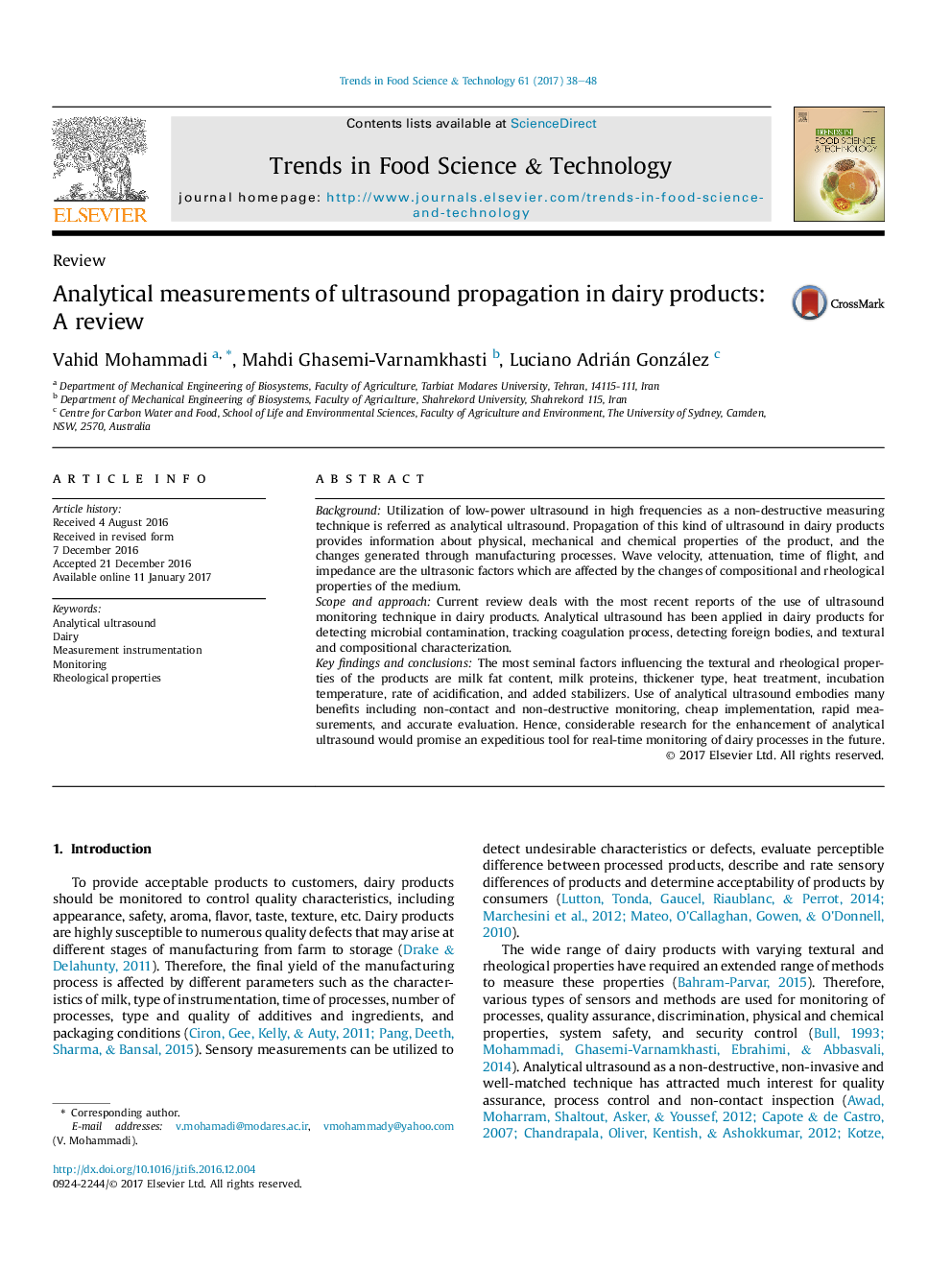| Article ID | Journal | Published Year | Pages | File Type |
|---|---|---|---|---|
| 5523724 | Trends in Food Science & Technology | 2017 | 11 Pages |
â¢A detailed review on the most recent studies of analytical ultrasound.â¢Discussing the sensory and rheological properties of dairy products and their relationships with ultrasonic features.â¢Considering the methodology and instrumentation used in different applications of analytical ultrasound.â¢Extracting the remarkable achievements and results of newest studies.â¢Describing the challenges and future trends for low-power ultrasound.
BackgroundUtilization of low-power ultrasound in high frequencies as a non-destructive measuring technique is referred as analytical ultrasound. Propagation of this kind of ultrasound in dairy products provides information about physical, mechanical and chemical properties of the product, and the changes generated through manufacturing processes. Wave velocity, attenuation, time of flight, and impedance are the ultrasonic factors which are affected by the changes of compositional and rheological properties of the medium.Scope and approachCurrent review deals with the most recent reports of the use of ultrasound monitoring technique in dairy products. Analytical ultrasound has been applied in dairy products for detecting microbial contamination, tracking coagulation process, detecting foreign bodies, and textural and compositional characterization.Key findings and conclusionsThe most seminal factors influencing the textural and rheological properties of the products are milk fat content, milk proteins, thickener type, heat treatment, incubation temperature, rate of acidification, and added stabilizers. Use of analytical ultrasound embodies many benefits including non-contact and non-destructive monitoring, cheap implementation, rapid measurements, and accurate evaluation. Hence, considerable research for the enhancement of analytical ultrasound would promise an expeditious tool for real-time monitoring of dairy processes in the future.
